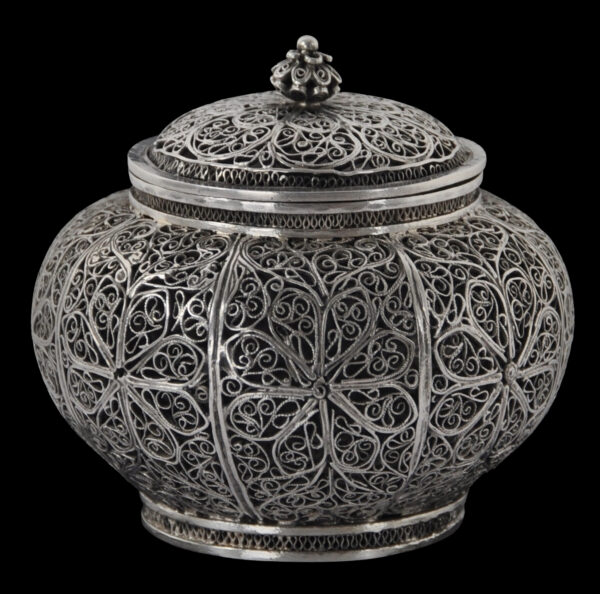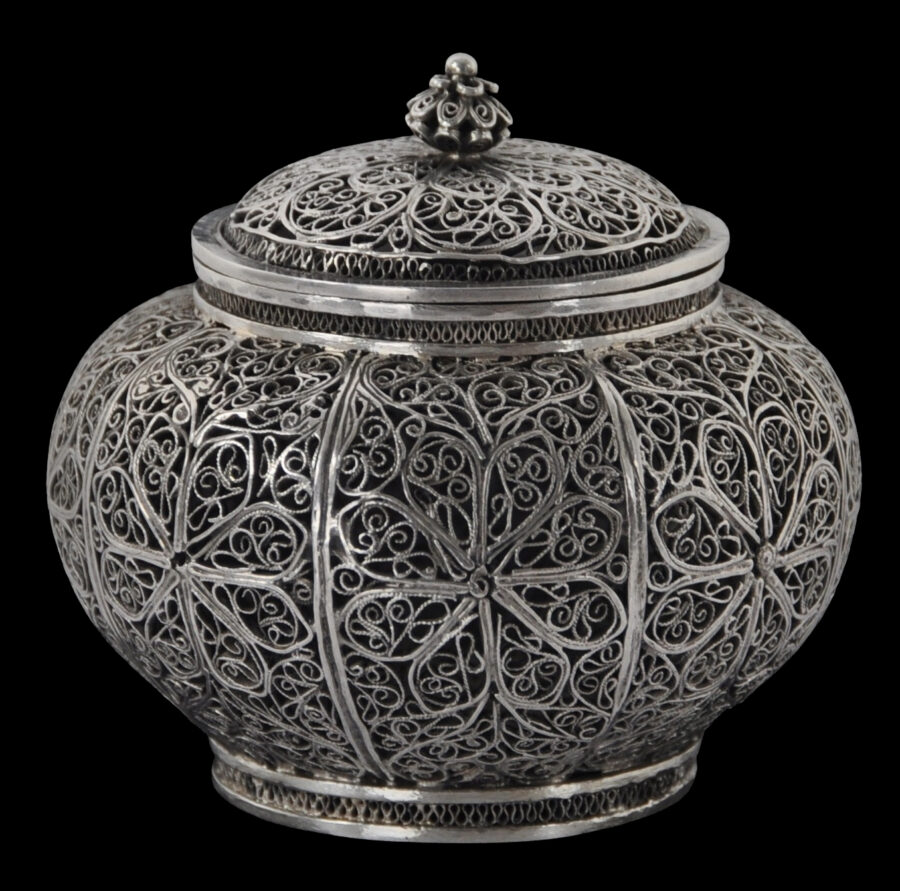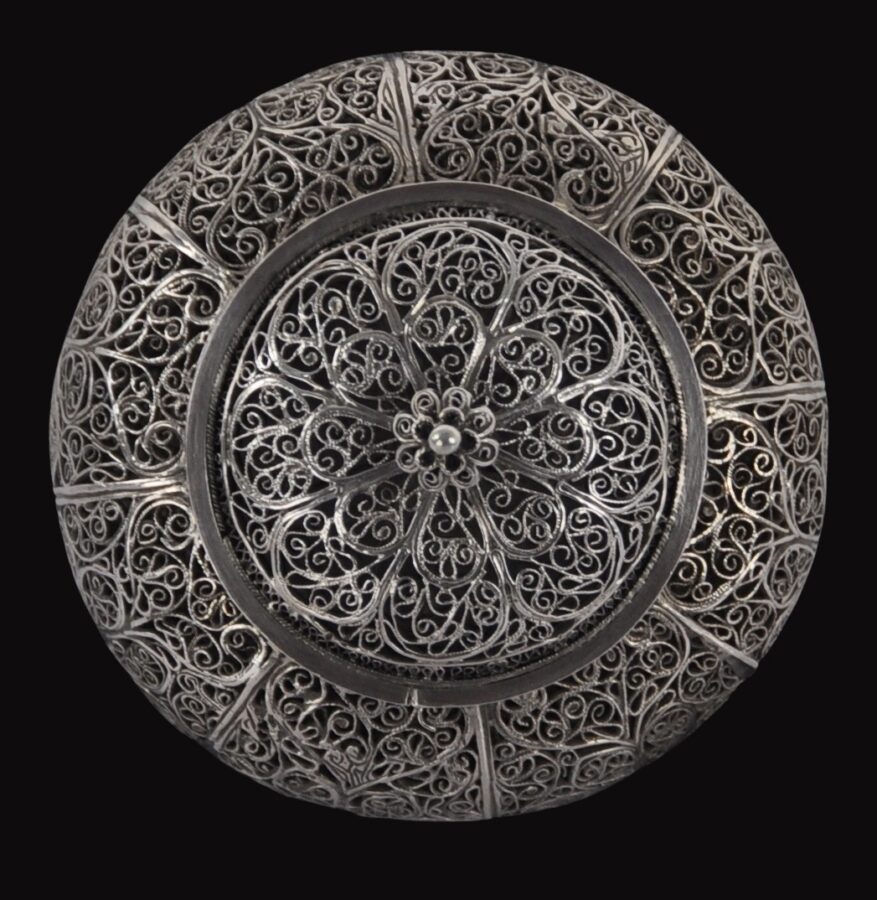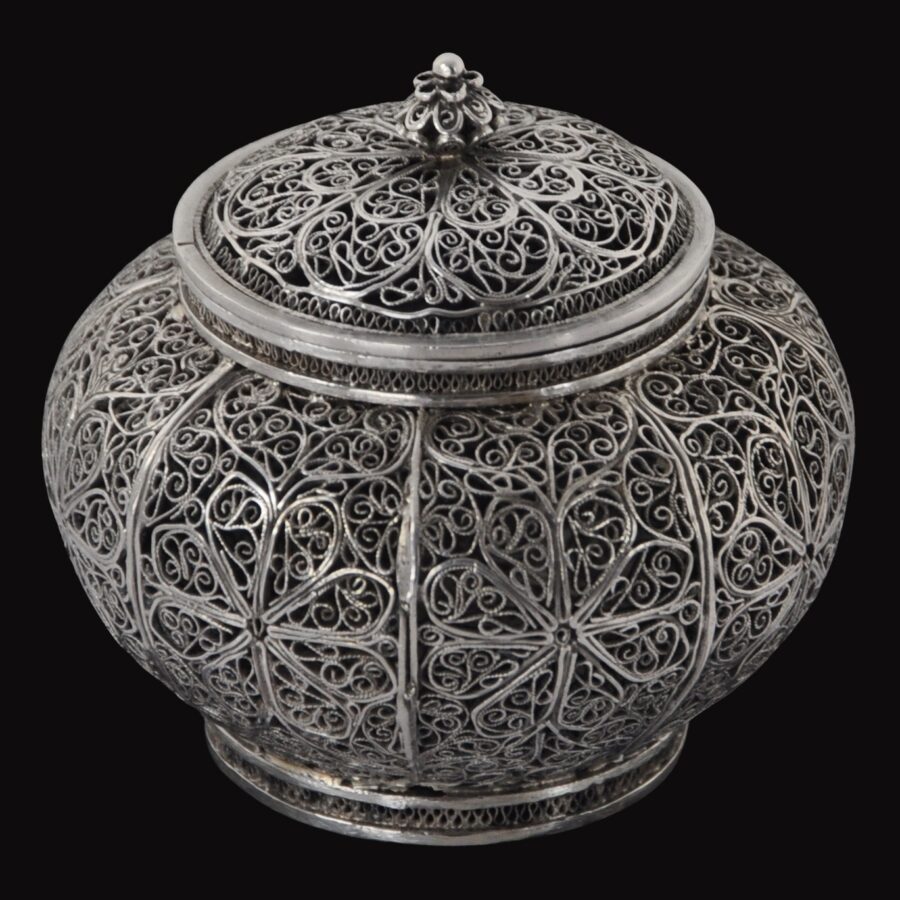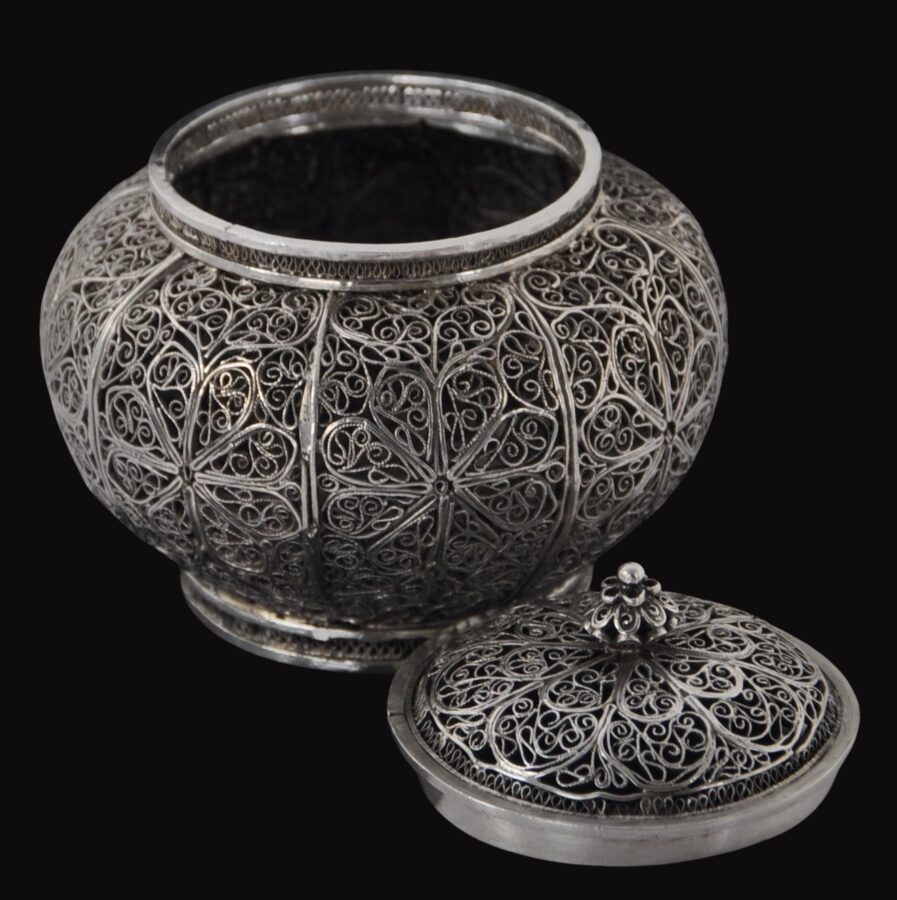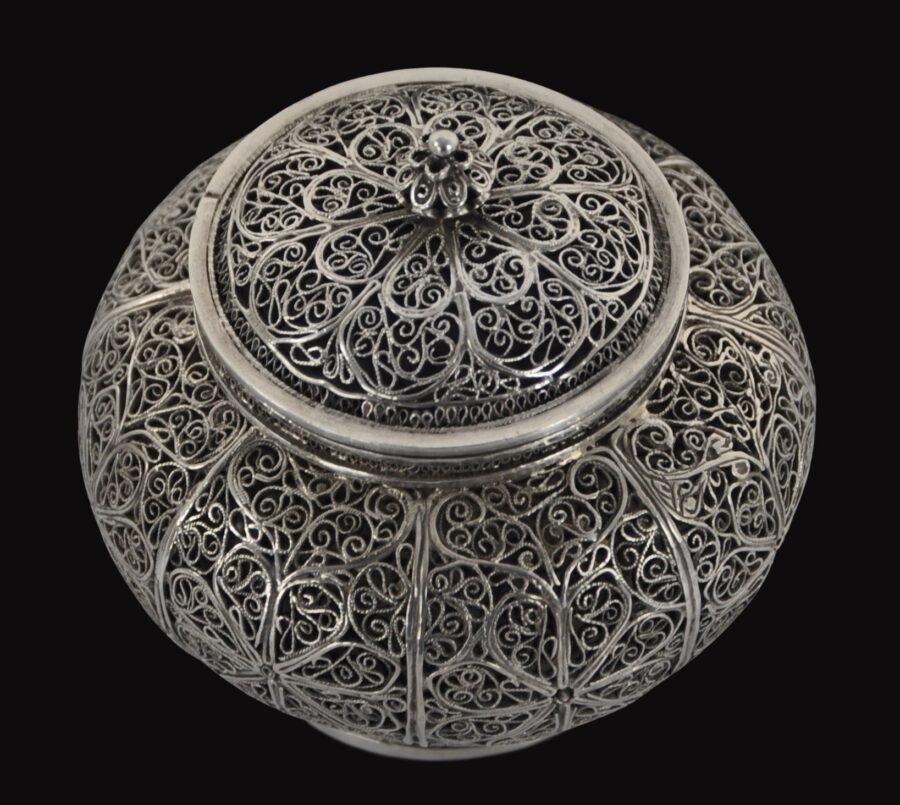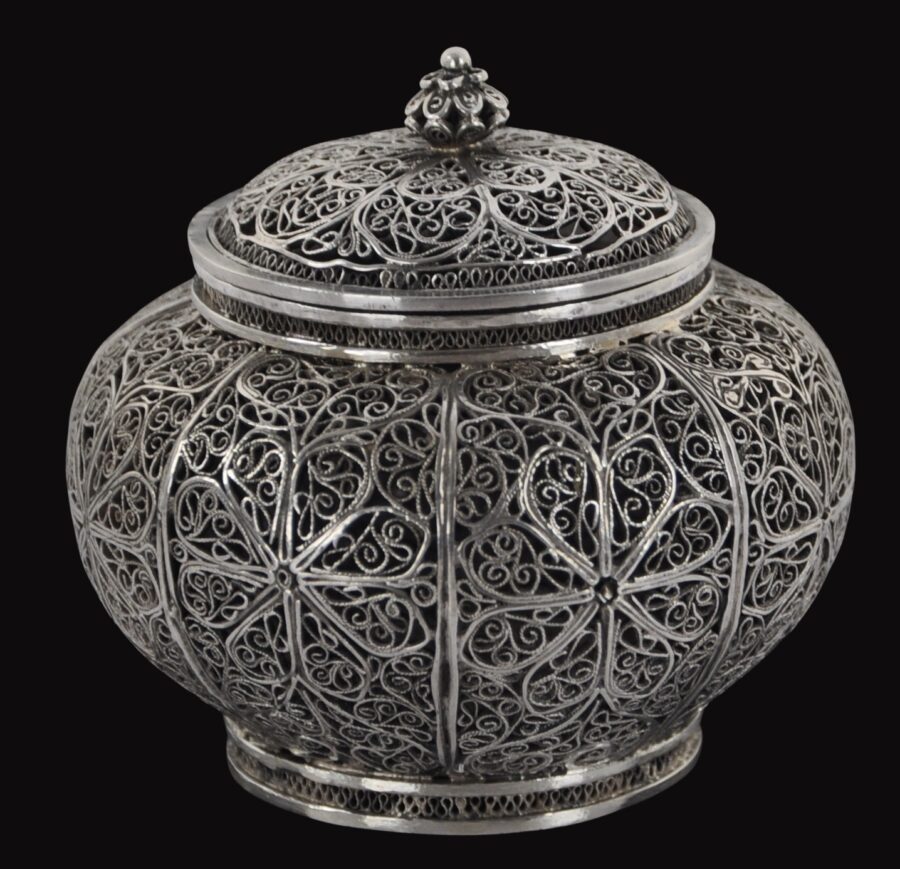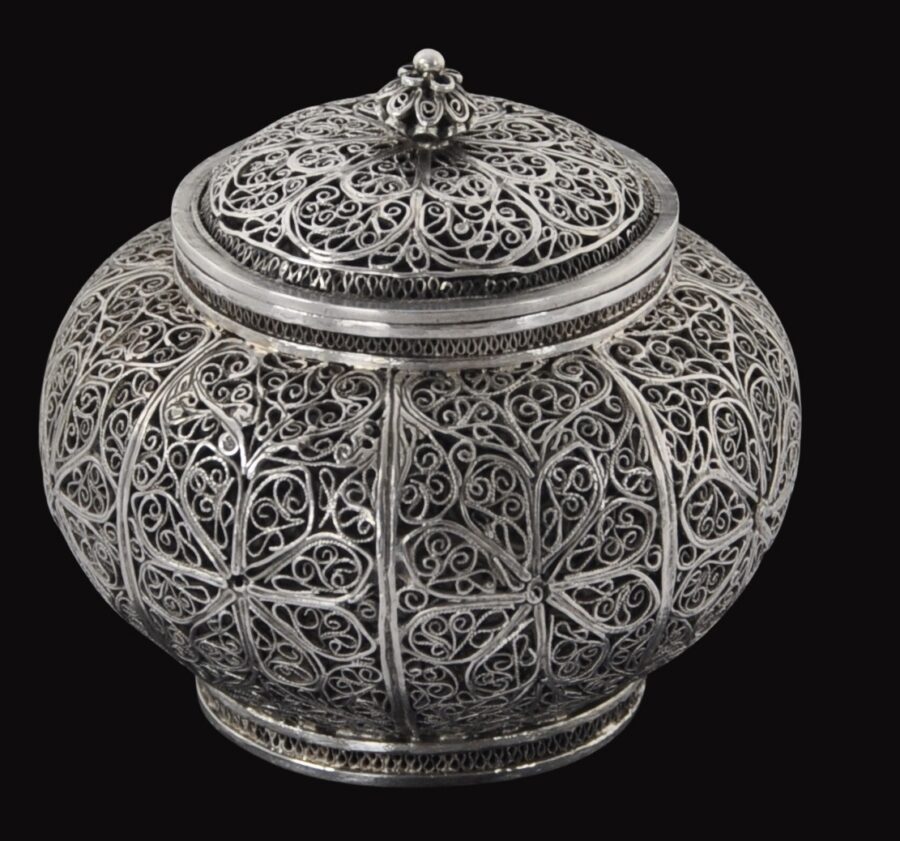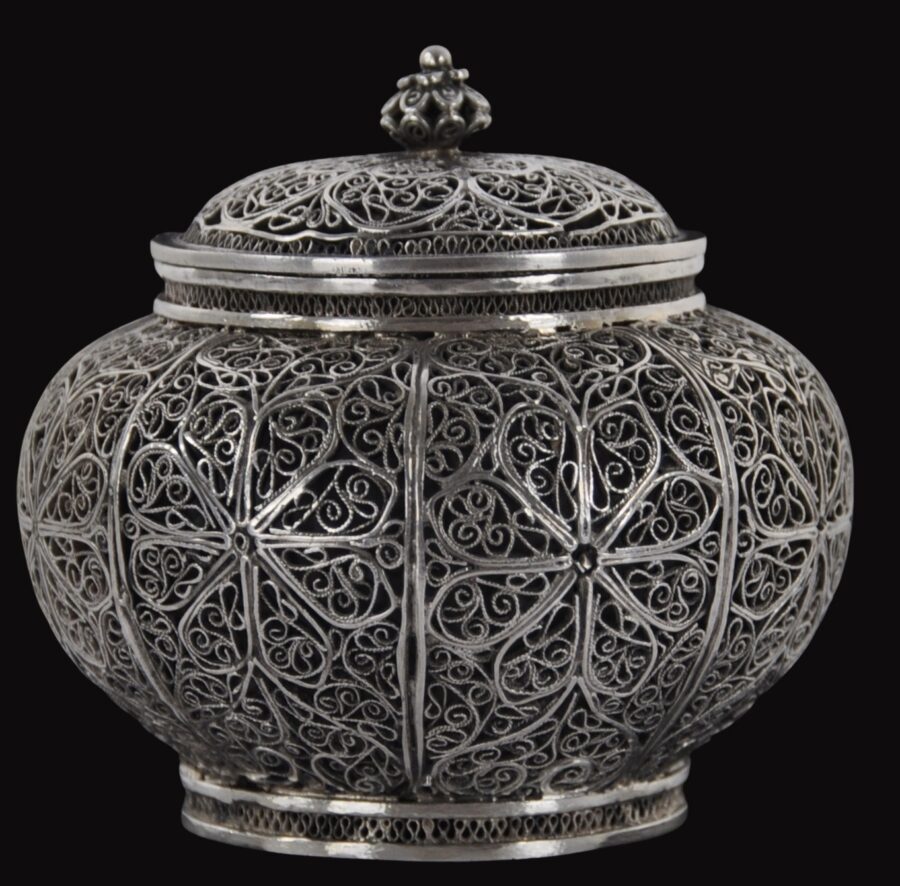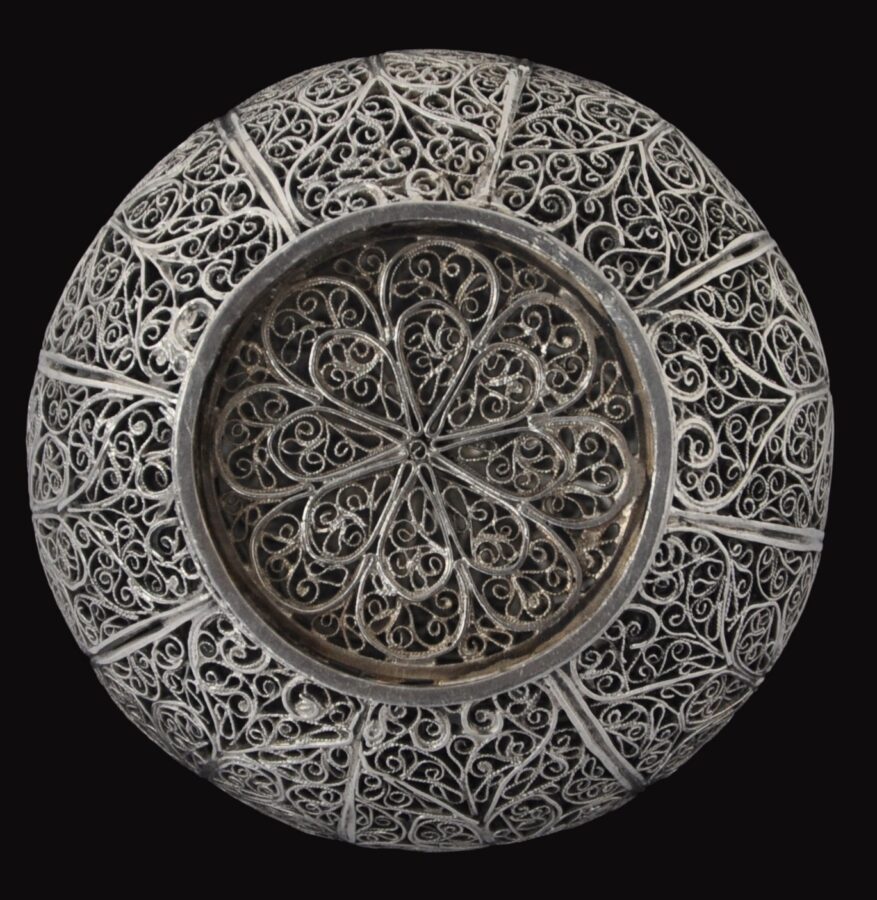This small silver filigree vase and lid is from the 18th century Dutch East Indies and is the only such example in this form of which we are aware. The diminutive form seems based on a Chinese export ginger jar. That an example of Chinese porcelain would have provided such inspiration is not surprising. Large quantities of Chinese porcelain were imported into the Dutch East Indies both for the local market and for the re-export market to markets in Europe, and also because many of the artisans working there were likely of ethnic Chinese ancestry.
The colonial Dutch provenance of the piece is further suggested by the presence of Dutch tax marks for imported silver on both the foot of the vase, and the rim of the lid.
The vase is of compressed, spherical form, and sits on a low ring foot. The lid is slightly domed and with a filigree finial.
The sides, lid and base are all in filigree – a mixture of flattened, wider wires that give the outlines of the flower patterns used. These are infilled with finer, whispier wires. The lid, neck and base are decorated with fine zig-zag patterns in filigree. This zig-zag is almost a defining feature of silver and gold filigree work undertaken in Batavia.
Items in silver filigree of this type were commissioned by the Dutch East India Company (VOC) and its agents from silversmiths in the Dutch East Indies, not just for European clients, but also for clients in India. Such items were then later found in India and were then (incorrectly) attributed to local silversmiths.
The main objective of the VOC was to bring spices from Asia to Europe. But the VOC also established a complex series of intra-Asia trade networks whereby items were purchased in one part of Asia to be sold in another for profit. One study identifies 1,059 ships in the employ of the VOC which routinely took part in trade within Asia between 1595 and 1660 (Parthesius, 2010, p. 13). Textiles were a mainstay of intra-Asia trade but other consignments included luxury goods, timber, Chinese porcelain, and even elephants. Items of silver were produced in and near Batavia at the behest of the VOC and there was a history of silver filigree production in the area. William Marsden in his treatise on Sumatra first published in 1784 includes an extensive description of gold and silver filigree work carried out in Sumatra, with the observation that: ‘there being no manufacture in that part of the world, and perhaps I might be justified in saying, in any part of the world, that has been more admired and celebrated than the fine gold and silver filigree of Sumatra. This indeed is, strictly speaking, the work of the Malayan inhabitants’. He adds that ‘The [local] Chinese also make filigree, mostly of silver, which looks elegant, but wants likewise the extraordinary delicacy of the Malayan work.’ Sumatra was an important market for Indian-made textiles imported by the VOC. Pepper and gold were among the goods that the VOC received in payment. Undoubtedly, filigree work was too, all of which would have been trans-shipped through Batavia.
The vase here is in excellent condition.
References
Backman, M., Malay Silver and Gold: Courtly Splendour from Indonesia, Malaysia, Singapore, Brunei and Thailand, River Books, 2024.
Curvelo, A., et al, The Orient Museum, Lisbon, Reunion des Musees Nationaux, 2008.
Jordan, A. et al, The Heritage of Rauluchantim, Museu de Sao Roque, 1996.
Marsden, W., The History of Sumatra: Containing an Account of the Government, Laws, Customs and Manners of the Native Inhabitants, with a Description of the Natural Productions, and a Relation of the Political State of that Island, 1784.
Parthesius, R., Dutch Ships in Tropical Waters: The Development of the Dutch East India Company (VOC) Shipping Network in Asia 1595-1660, Amsterdam University Press, 2010.
Piotrovsky, M. et al, Silver: Wonders from the East – Filigree of the Tsars, Lund Humphries/Hermitage Amsterdam, 2006.
Veenendaal, J., Asian Art and the Dutch Taste, Waanders Uitgevers Zwolle, 2014.


